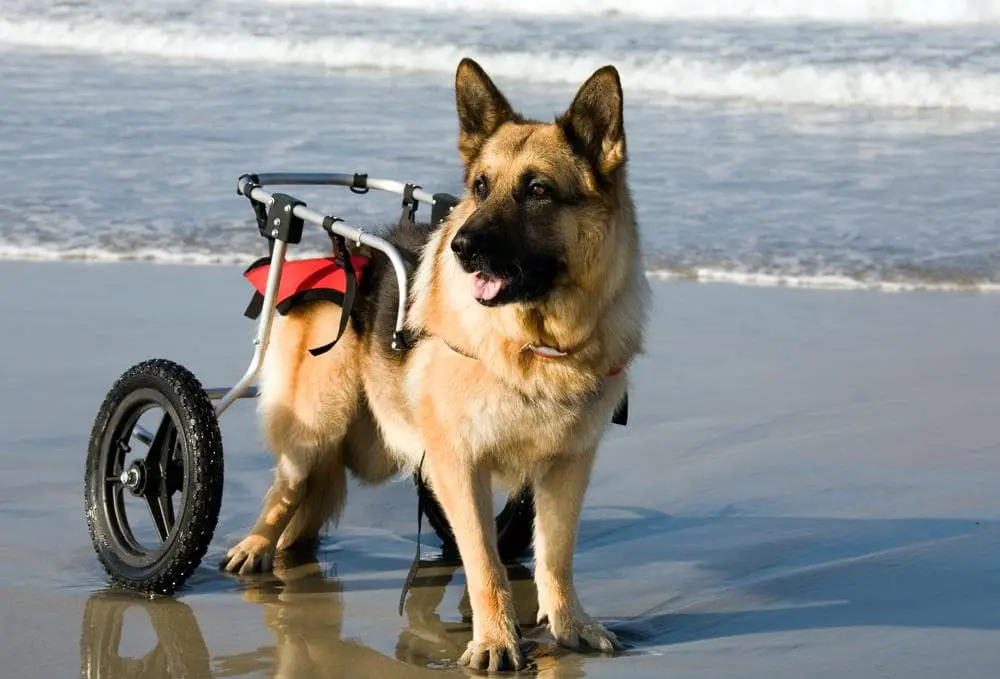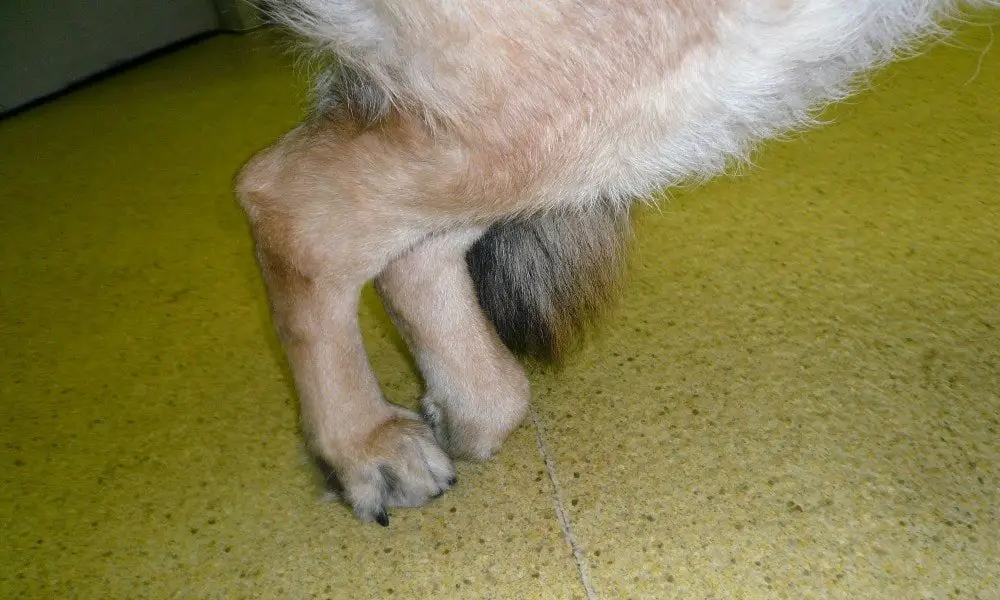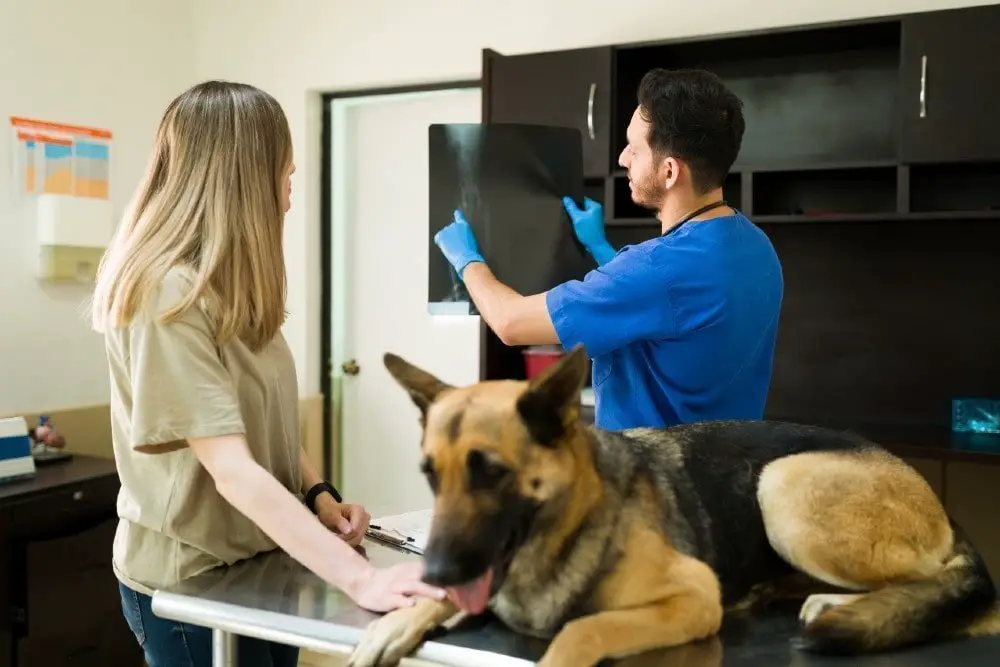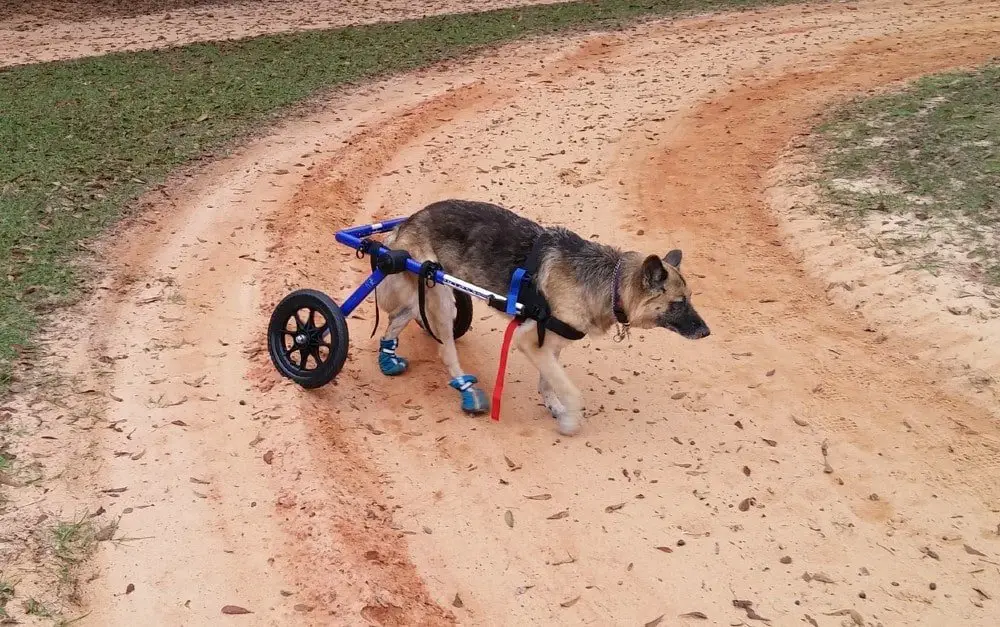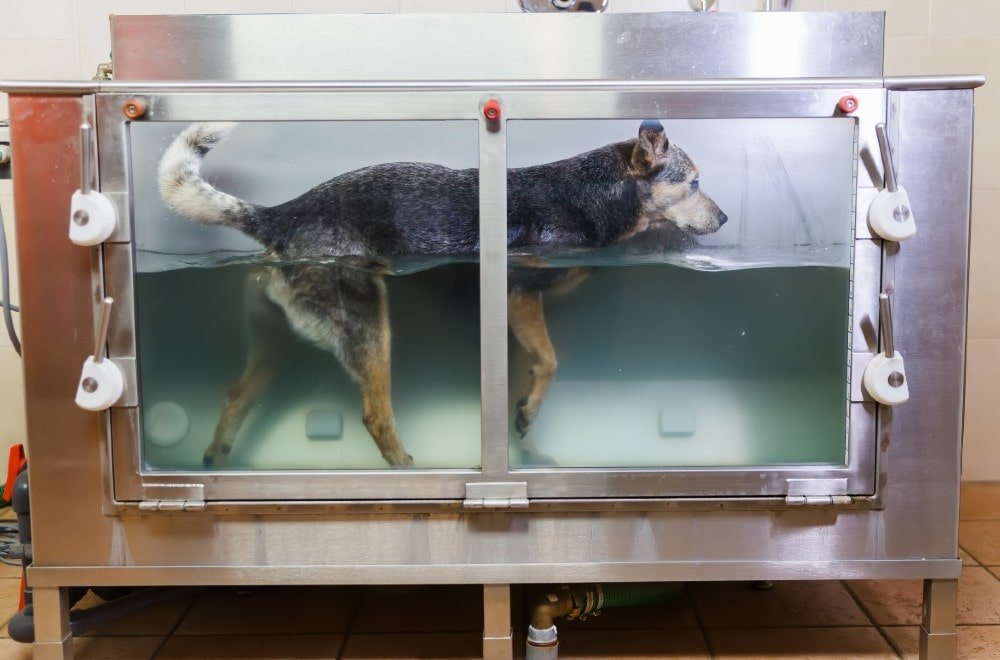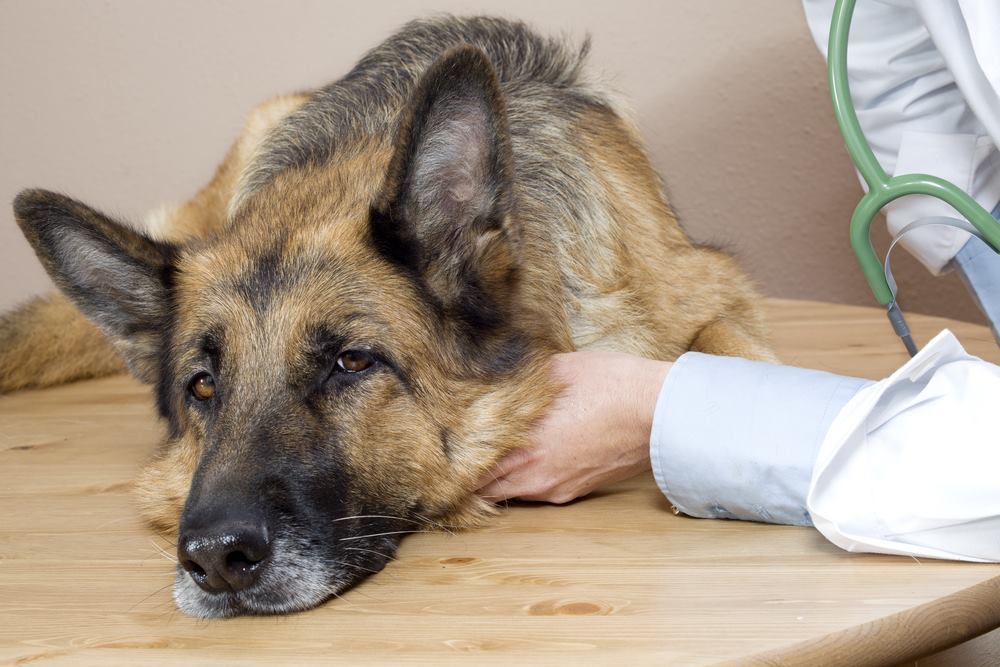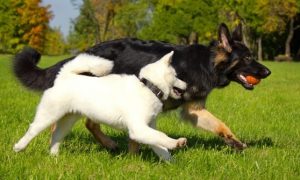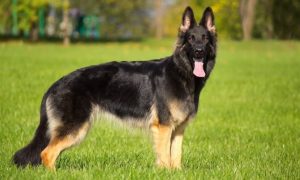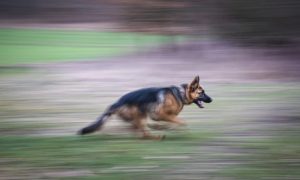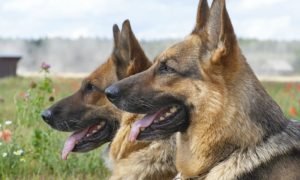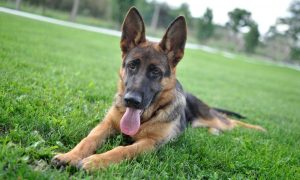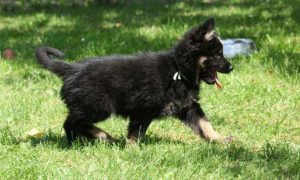What is Degenerative Myelopathy?
Degenerative Myelopathy (DM) in dogs is a disease most pet owners have never heard of.
Most German Shepherd owners fear hip dysplasia in their German shepherd and are unaware that this breed is also one of the top breeds known to develop Canine Degenerative Myelopathy. DM is progressive and, to date, has no cure.
Degenerative Myelopathy is a degenerative neurologic disease that was recognized in 1973. Since then, steps have been taken to understand the disease better.
Degenerative Myelopathy is clinically referred to as Chronic Degenerative Radiculomyelopathy (CDRM).
DM is a spinal cord illness that attacks a dog’s nervous system causing weakening and paralysis in the hind limbs and eventually moves to the front limbs. The disease starts out slowly and worsens over time, leading to death.
Degeneration of the white matter of the spinal cord causes progressive degeneration symptoms. DM is comparable to the human disease Amyotrophic Lateral Sclerosis (ALS), also known as Lou Gehrig’s Disease.
Early on, the first signs of Degenerative Myelopathy are similar to osteoarthritis (arthritis), which is common in large breed dogs, making diagnosis difficult.
Arthritis can be ruled out when the first signs of Degenerative Myelopathy present themselves.
Degenerative Myelopathy Symptoms
Symptoms of DM appear gradually over months or even years. The first signs of DM are usually very subtle. The following are the typical progressions of symptoms:
Initial Symptoms
- Hindquarters will have random spurts of instability, loss of coordination, swaying, or wobbling when standing
- Rear legs crossing when standing
- Backend weakness will affect walks, climbing stairs, jumping on furniture, or into a vehicle
- A slight drag of one rear foot resulting in toenails becoming worn down
- A rearfoot scraping the ground and the top surface of the foot may become hairless and inflamed
Degenerative Myelopathy may start in both rear legs simultaneously or may begin in one and gradually move to the other one.
As Degenerative Myelopathy progresses, so does the loss of muscle control and coordination in the hind legs.
A dog will begin to lose feeling and control over its back legs, causing them to stumble or trip.
Intermediate Symptoms
- Progressive hind limb weakness.
- Struggles to support weight with back legs.
- Knuckling of back feet = turning foot under and putting weight on top of the foot instead of the bottom.
- Falling over if bumped from the side.
- May need support when walking
- Struggling to get up from a down position
- Urinary incontinence and fecal incontinence
Advanced Symptoms
- Weakness in front legs.
- Paralysis of the hind legs.
Dogs will eventually struggle to get up and move around until complete paralysis in the hindquarters sets in. As the disease progresses, organ failure can occur.
The slow degenerative process of this disease is not painful. However, discomfort may be present due to a dog overworking other body parts to compensate for the backend weakening.
If you have never experienced this disease, you should consider yourself very lucky. Most dog owners become aware of Degenerative Myelopathy only after a diagnosis has been presented.
Learn about my journey battling DM with my German Shepherd Bruno (RIP) here.
Breeds Affected by Degenerative Myelopathy
Degenerative Myelopathy can occur in any breed or mixed-breed dog, but years of research show certain breeds are more likely to get it.
Degenerative Myelopathy Occurs the Most Often In:
- German Shepherds
- Welsh Corgis
Other Dog Breeds Predisposed to Degenerative Myelopathy:
- American Eskimo Dog
- Bernese Mountain Dog
- Borzois
- Boxer
- Chesapeake Bay Retriever
- German Shepherd Mixes
- Golden Retrievers
- Great Pyrenees
- Kerry Blue Terrier
- Pembroke Welsh Corgi
- Poodle
- Pug
- Rhodesian Ridgeback
- Shetland Sheepdog
- Soft-Coated Wheaten Terrier
- Wire Fox Terrier
What Causes Degenerative Myelopathy in Dogs?
The exact cause of Degenerative Myelopathy in dogs is not known.
People familiar with Lou Gehrig’s disease (ALS) will notice the similarities of Degenerative Myelopathy. Both experience progressive loss of muscle function, weakness, paralysis, and eventual death.
Researchers at the University of Missouri suspect a genetic mutation between these two diseases.
A study funded by the American Kennel Club Canine Health Foundation (and participating breed clubs) revealed that dogs with Degenerative Myelopathy have a mutated SOD1 gene that resembles amyotrophic lateral sclerosis (ALS).
What Age Does Degenerative Myelopathy Appear?
Degenerative Myelopathy used to be considered an old dog disease. Still, it is starting to be common in middle-aged to senior dogs and frequent in German Shepherds as young as five to six years of age.
How to Diagnose Degenerative Myelopathy
Diagnosing Degenerative Myelopathy can be difficult and time-consuming.
Suppose you suspect your dog might have Degenerative Myelopathy based on early symptoms and an at-risk breed. In that case, your veterinarian should first rule out a stroke, infection, tumor, or cyst, which all can give initial clinical signs of DM.
Other issues that could cause hindquarter problems are hip dysplasia, a herniated disc in the back, or arthritis, which can be ruled out via X-rays and other spine imaging techniques, especially in the early stages of DM.
Tissue biopsies, cerebrospinal fluid (CSF) analysis, neuromuscular testing, and histopathology of the spinal cord are also possible diagnostic tests.
Any at-risk breed exhibiting clinical indications associated with DM should do DNA genetic testing for the SOD-1 mutation.
There is no clear-cut test for a definitive, accurate diagnosis of DM, and the process of elimination determines a “diagnosis.”
Managing Degenerative Myelopathy
Degenerative Myelopathy has no cure, and treatment options can be equally frustrating.
The only good thing about this horrifying disease is this: the nerves that control pain disappear along with the nerves that control movement. Your dog will not be in physical pain due to Degenerative Myelopathy, although they will become weaker.
Western medicine’s treatment varies. Some veterinarians’ only treatment plan is to keep your dog comfortable through anti-inflammatories and pain medication.
Aminocaproic acid (EACE) and n-acetylcysteine (NAC) are drugs that may slow down the rate of degeneration.
It’s believed that Aminocaproic acid can slow the sheath breakdown, a protective layer around nerve fibers in the spinal cord. N-acetylcysteine is an antioxidant that prevents or slows damage to cells.
These medications have no medical guarantee when managing DM, but they are an option for owners to look into.
Other things to help manage a dog’s mobility and comfort with DM are:
- Watch for urinary infections
- Provide comfortable bedding
- Use baby gates to restrict and monitor access to stairs
- Install a ramp if your house is on a raised foundation and has steps
- Use a portable ramp to load your dog into vehicles
- Use a sling support strap or harness to help control the failing hindquarters
- Use a no knuckling training sock for dogs knuckling or dragging rear feet
- Get a mobility cart to keep your dog more active
- Monitor physical activity, don’t let your dog overexert themselves
Diet
Food plays an important role in your dog’s health. A dog diagnosed with DM will benefit from a diet that is not highly processed.
A better quality commercial food along with fresh meat and vegetables may provide vitamins and minerals that will assist with nerve health.
Get your dog down to its ideal weight to reduce stress on joints that are overcompensating for hindquarter weakness.
Vitamins and Supplements to Support Nerve Function
- Vitamin B, Vitamin E, Vitamin C, and Selenium = Antioxidant nerve protection
- Vitamin B6, Vitamin B12, Folic Acid, and Cobalamin = Slow or maintain nerve damage
Alternative Medicine
Eastern medicines treatment is a realistic approach that focuses on aggressively slowing the progression of Degenerative Myelopathy and keeping the dog comfortable and functioning for as long as possible.
Eastern medicine uses a combination of exercise, dietary supplements, acupressure, acupuncture, and other supportive methods to slow the degeneration of the spinal cord and improve a dog’s quality of life.
Exercise
If your dog has been diagnosed with DM, your first instinct may be to stop walks or exercise. This is the last thing you should do.
As an owner, your goal is to keep your dog active for as long as possible.
A mobility cart can lift a dog’s spirit and keep them physically active and playful without stressing or tiring the hindquarters.
Your veterinarian may recommend physical therapy to help with mobility and range of motion.
Hydrotherapy is physical exercise in water in a controlled environment and at a steady speed and recommended for Degenerative Myelopathy.
Swimming will provide the same results if you can’t afford hydrotherapy but have access to water. Swimming is an excellent alternative to walks as it maintains muscle tone and does not cause stress on joints.
Dogs with DM benefit physically and mentally from exercise. Exercise is needed to keep muscle mass and maintain brain function.
All forms of exercise need to be controlled and adjusted accordingly as your dog’s health and mobility decline. Let your dog set the pace, and don’t overdo it.
Degenerative Myelopathy Testing
There is now a DNA test to determine if dogs carry the Degenerative Myelopathy gene.
The test is easy to do in the comfort of your home, and results will determine the following:
- A/A = Affected (two copies of the mutated gene)
- N/A = Carrier (one copy of the gene is normal, and one copy is mutated)
- N/N = Clear (two copies of the gene that are normal)
Only dogs with two copies of the mutated SOD-1 gene, according to current research, can develop Degenerative Myelopathy.
Dogs diagnosed as “Affected” may develop DM later in life. In contrast, others will never show any signs of the disease or may die of something else before they develop Degenerative Myelopathy.
Owners with high-risk breeds should watch for the early signs of Degenerative Myelopathy as their dog ages.
A Dog diagnosed as a “Carrier” should not develop DM but could pass it to offspring depending on their breeding partner’s status.
A Dog diagnosed as “Clear” should not develop DM or pass it off in any offspring regardless of the breeding partner’s status.
Before breeding, at-risk breeds should be checked for the SOD-1 mutation. If a dog is a carrier or affected, it should only be bred to a clear partner.
Hopefully, breeders will take advantage of this DNA testing to make better breeding decisions by adequately choosing the best breeding partner and lessening the frequency of Degenerative Myelopathy in future generations.
Degenerative Myelopathy is an agonizing disease for an owner and dog to experience.
DNA testing is an easy way to prevent Degenerative Myelopathy and help breed the healthiest dog possible.
If you have a predisposed breed for DM and have no intentions of breeding your dog, you may still want to consider testing it to learn its status.
Dog owners can order the DNA test kit from the following sites: Orthopedic Foundation for Animals, DDC DNA Diagnostics Center, and Animal Genetics.
Follow the test kit instructions, drop in the mail, and wait for your dog’s DNA test results.
Degenerative Myelopathy Outcome
Degenerative Myelopathy is a fatal disease with no cure. Most dogs with DM live between six months and three years after being diagnosed.
Proactive owners benefit from longer survival times with their dogs.
Do everything you can to slow this degenerative disease but don’t sacrifice your dog’s quality of life as your dog declines before your eyes.
If your dog has become completely paralyzed, it’s time to make the heart-wrenching decision to put them down and let them go.
Fight the battle but understand the war is not meant for you to win.
Prepare yourself mentally for the final days and enjoy every present-day with your beloved friend, partner, and baby.
Learn about my journey battling DM with my German Shepherd Bruno (RIP) here.

